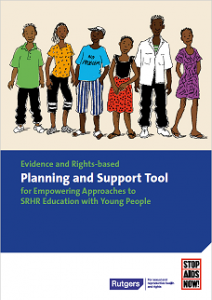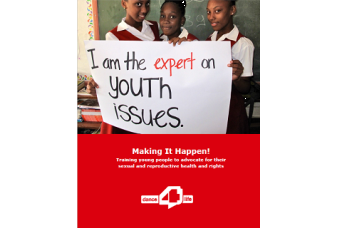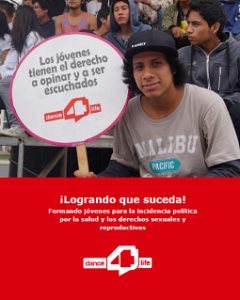 Kivuko na Watoto Mwongozo wa Unasihi
Kivuko na Watoto Mwongozo wa Unasihi
Mwongozo huu umeambatanishwa na mitaala ya Kivuko na Watoto. Tumeandika mwongozo huu kwa ajili ya watu ambao tayari wana taarifa, na stadi, na uzoefu unaohitajika katika kuwanasihi watu wazima kuhusu VVU na masuala yanayohusiana. Yake tumeweka mkazo katika taarifa zile za nyongeza na stadi ambazo wanasihi wanazihitaji ili wafanye kazi na watoto wa makundi yote mawili, wale walioathiriwa na VVU au wanaoishi na VVU, na walezi wao. Pia tumeainisha zile hatua muhimu za kufuata katika mazingira ya unasihi yanayojumuisha watoto na walezi.
Unaweza kuipakua kwa bure hapa (fungua chini ukurasa); unaweza kuhitaji kujiandikisha na Salamander Trust tovuti ili kufikia hati.
Imeandikwa awali kwa Kiingereza.
Kutoka kwa kitabu
Tumeandika mwongozo huu kwa ajili ya watu ambao tayari wana taarifa, na stadi, na uzoefu unaohitajika katika kuwanasihi watu wazima kuhusu VVU na masuala yanayohusiana. Hatujaweka taarifa za msingi, kama vile unasihi ni kitu gani au stadi za unasihi. Badala yake tumeweka mkazo katika taarifa zile za nyongeza na stadi ambazo wanasihi wanazihitaji ili wafanye kazi na watoto wa makundi yote mawili, wale walioathiriwa na VVU au wanaoishi na VVU, na walezi wao. Pia tumeainisha zile hatua muhimu za kufuata katika mazingira ya unasihi yanayojumuisha watoto na walezi.
Mwongozo huu umeambatanishwa na mitaala ya Kivuko na Watoto. Watoto na walezi ambao wanahudhuria warsha za Kivuko na Watoto hujifunza kuthamini uwezo wao, na kutafuta njia za
kuzitumia katika kuboresha maisha yao. Kwa mfano: walezi kujifunza namna ya kuwafundisha watoto nidhamu badala ya kuwapiga au kuwaadhibu, wakati watoto wanajifunza namna ya kuweka mipaka kuhusiana na uhusiano wa kimapenzi (kingono), na namna ya kujikinga wao na wengine dhidi ya unyanyasaji wa kijinsia.
Misingi ya kuwanasihi watoto
Unasihi kwa ajili ya watoto, kama vile kwa watu wazima, kunadhamiria kuwasaidia kuhimili mihemko na changamoto zinazohusiana na VVU na athari zake, na kufanya uchaguzi ambao utaboresha maisha yao katika misingi ya kuwa na uelewa. Japokuwa mkazo unaweza kuwa ni katika VVU, wanasihi wanahitaji kuona na kufanya kazi na mtoto huyo kwa ukamilifu wake: mambo yote yanayogusa maisha yake.
Kuwanasihi watoto hujumuisha:
- kuwasaidia wasimulie hadithi zao;
- kuwasikiliza kwa makini;
- kuwapatia taarifa sahihi na muafaka;
- kuwasaidia wafanye uamuzi utokanao na uelewa;
- kuwasaidia watambue na kujenga uimara wao;
- kuwasaidia kujenga mtazamo chanya katika maisha.
Kuwanasihi watoto haijumuishi:
- kufanya uamuzi kwa ajili yao;
- kuwahukumu au kuwalaumu;
- kuwahoji au kubishana nao;
- kuweka ahadi ambazo huwezi kuzitimiza;
- kuwahubiria au kuwafanyia mhadhara;
- kulazimisha imani zako kwao.
Majukumu yetu makuu wakati wa vipindi vya unasihi na watoto na walezi hujumuisha:
- Kuwasaidia waelewe hali zao na namna wanavyojisikia kwa kutafakari kile ambacho walitueleza hapo nyuma, kwa hali zote mbili; ya maneno na lugha ya mwili;
- Kuwasaidia kutafakari majuto yao na hisia za kujilaumu na hasira;
- Kuwasaidia ili waone wanachoweza kufanya ili kuboresha hali yao, hata kama mambo engine yako nje ya udhibiti wao;
- Kuwasaidia kufanya uamuzi utokanao na uelewa;
- Kushirikishana nao taarifa zenye manufaa;
- Kuwasaidia katika kujenga ujasiri na kujiamini ili waweze kuibuka na mikakati yao wenyewe na matarajio na mipango kwa ajili ya hapo baadaye.
Ni kitu gani cha tofauti katika kuwanasihi watoto?
Yapo mambo manne ya tofauti wakati tunawanasihi watoto kinyume na watu wazima.
- Ni lazima turekebishe kile tunachokisema na kukifanya ili kishabihiane na umri na hatua za ukuaji wa kila mtoto. N lazima pawepo tofauti kubwa kati ya namna tunavyofanya kazi na watoto wa umri wa miaka mitano ambao wanaweza kuwa hawajajua kuandika bado, na wa umri wa miaka15 ambao wanaweza kuwa wamepevuka kimhemko.
- Kwa kawaida huwa hatufanyi kazi na mteja mmoja-mmoja, bali na mtoto pamoja na mlezi (walezi) wake. Ni lazima tushughulikie matarajio na mahitaji yao mbalimbali, na kuwasaidia wafanye kazi pamoja.
- Ni lazima tuwe tayari na uwezo wa kuongea na watoto kuhusu ngono na ujinsia, na tunaweza kuona ugumu katika mambo haya.
- Tunahitaji kuwa makini kuhusu taratibu za maeneo na sheria ziwahusuzo watoto, kwa mfano, kujua ni katika umri gani na mazingira gani mtoto anaweza kufanya kipimo cha VVU bila ridhaa ya mlezi.
Exploring green social prescriptions and community events to support mental health and enhance the environment

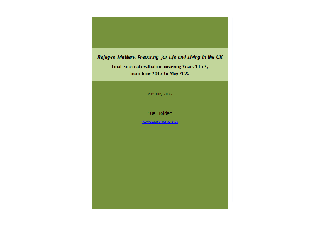
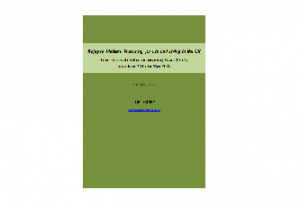
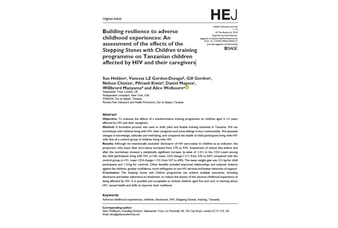
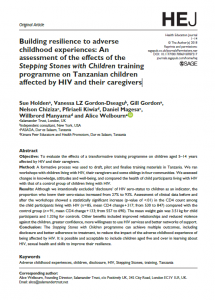 An assessment of the effects of the Stepping Stones with Children training programme on Tanzanian children affected by HIV and their caregivers
An assessment of the effects of the Stepping Stones with Children training programme on Tanzanian children affected by HIV and their caregivers
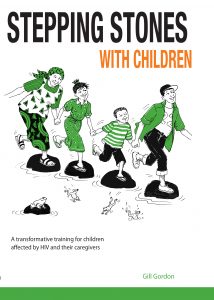 A transformative training for children affected by HIV and their caregivers
A transformative training for children affected by HIV and their caregivers
 Stepping Stones with Children Counselling Guide
Stepping Stones with Children Counselling Guide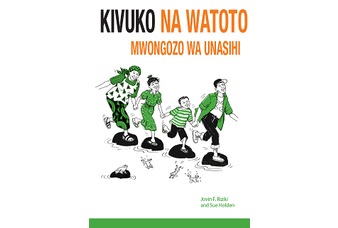
 Kivuko na Watoto Mwongozo wa Unasihi
Kivuko na Watoto Mwongozo wa Unasihi
